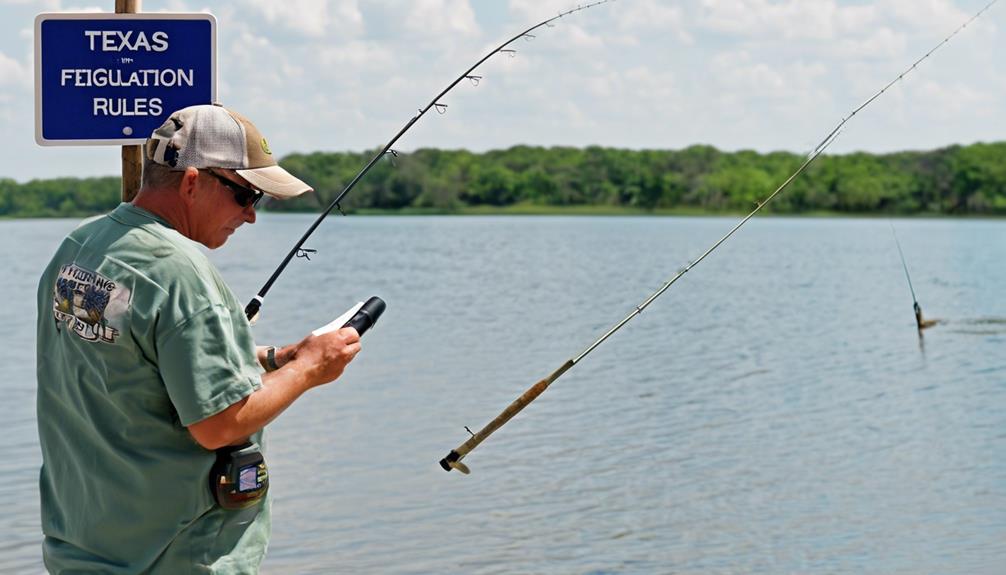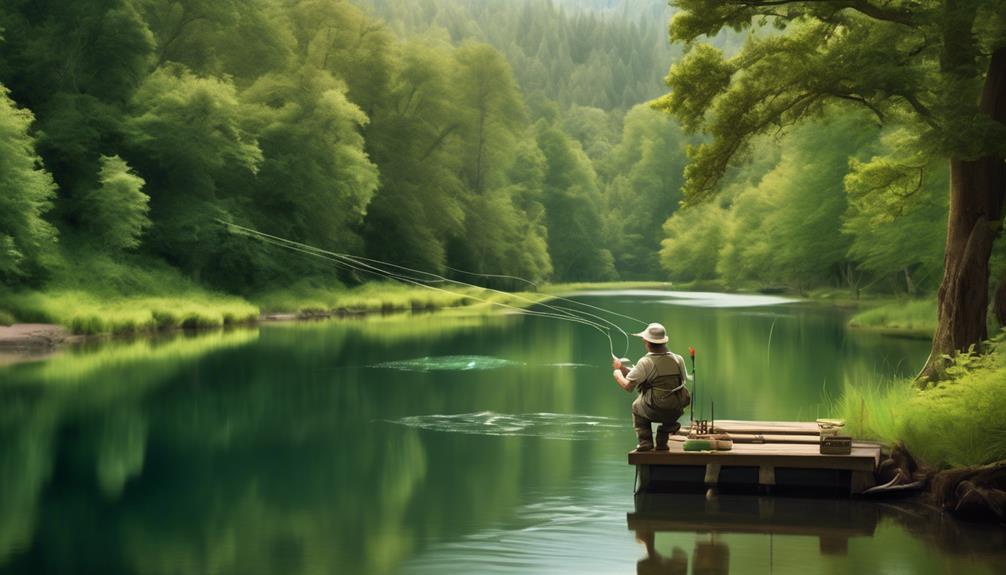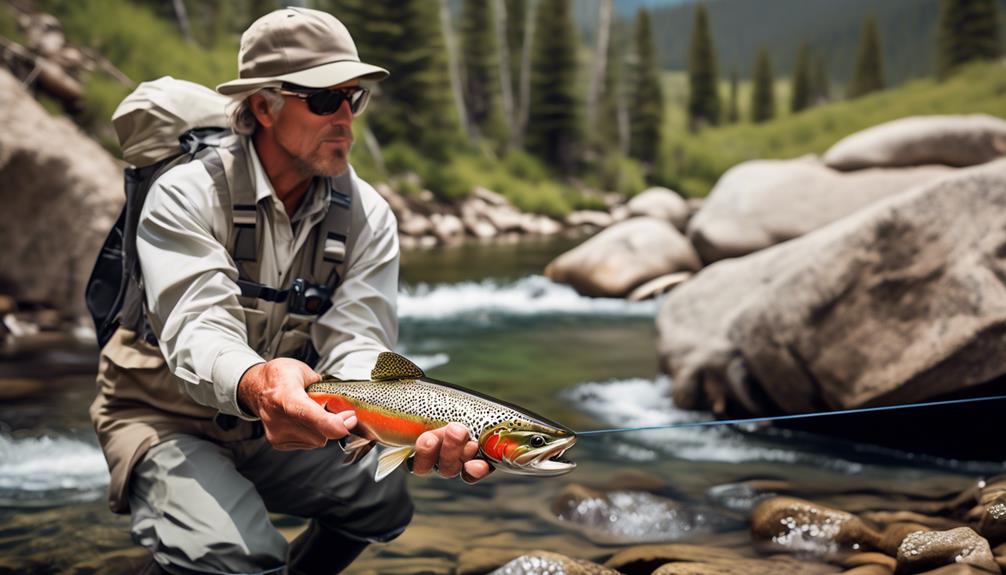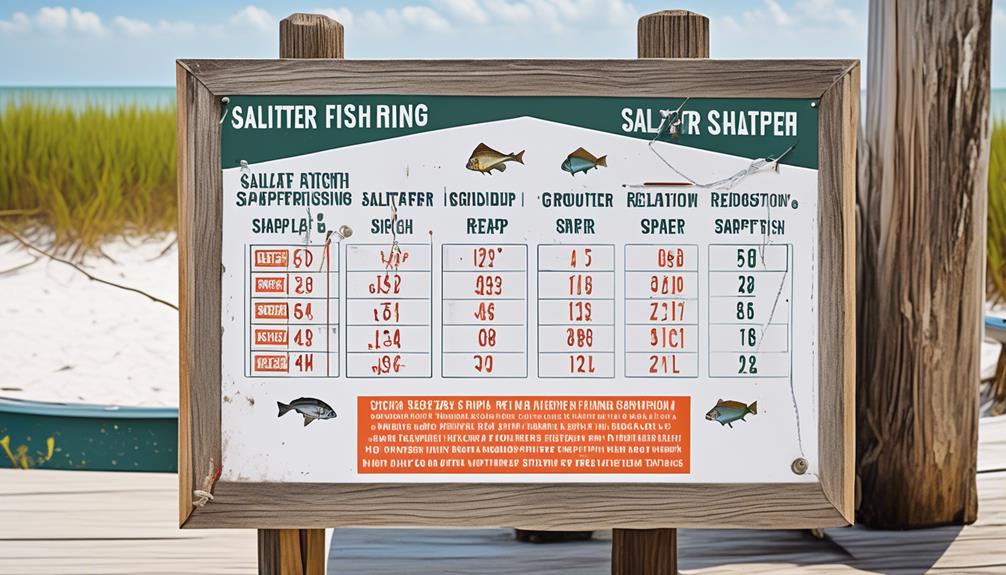Are you a bass fishing enthusiast in Texas seeking to navigate the nuanced and necessary regulations governing your angling adventures? Understanding bass fishing regulations in Texas is a vital aspect of being a responsible angler.
The Lone Star State boasts a diverse array of bass fishing opportunities, but it's essential to be well-versed in the rules and restrictions that govern this popular sport. From catch limits and size restrictions to required licenses and permits, the regulations are multifaceted and can sometimes be intricate to interpret.
As you navigate the waters of Texas bass fishing, having a comprehensive understanding of these regulations is not only crucial for compliance but also for the preservation and sustainability of the bass population.
Texas Bass Fishing Regulations Overview
When bass fishing in Texas, you must adhere to the regulations set forth by the Texas Parks and Wildlife Department. Bass fishing seasons in Texas are carefully managed to ensure the sustainability of the bass population. The conservation efforts aim to maintain healthy bass populations while providing recreational opportunities for anglers.
The bass fishing seasons in Texas are divided into specific periods to protect the fish during their spawning times and to promote sustainable fishing practices. It's crucial for anglers to familiarize themselves with these seasons to avoid unintentional harm to the bass population. By adhering to these regulations, you contribute to the conservation efforts aimed at preserving the bass population for future generations of anglers to enjoy.
Conservation efforts in Texas focus on maintaining a balance between recreational fishing and the well-being of the bass population. The Texas Parks and Wildlife Department works diligently to implement policies that support sustainable fishing practices. By following the regulations and being mindful of conservation efforts, you play a vital role in preserving the natural resources and ensuring the longevity of bass fishing in Texas.
Catch Limits and Size Restrictions
To ensure the sustainability of bass populations, Texas imposes catch limits and size restrictions for bass fishing, aiming to preserve the balance between recreational angling and conservation efforts. Understanding these regulations is crucial for every angler to contribute to the conservation of bass populations while enjoying their favorite pastime.
Here's what you need to know about catch limits and size restrictions:
- Size Limits: Texas has specific size limits for bass fishing to protect the younger, smaller fish and allow them to reach maturity and contribute to the overall population. For largemouth bass, the minimum size limit is 14 inches in most water bodies, while smallmouth and Guadalupe bass have a minimum size limit of 12 inches. These size limits help in maintaining a healthy bass population by ensuring that the fish have the opportunity to spawn at least once before being eligible for harvest.
- Bag Limits: Bag limits refer to the maximum number of bass that an angler can harvest in a single day. In Texas, the bag limit for bass is typically set at 5 fish per day, with exceptions for certain water bodies. Adhering to these bag limits is essential for conserving bass populations and allowing for sustainable recreational fishing opportunities.
- Conservation Efforts: Understanding and following catch limits and size restrictions isn't only a legal obligation but also a responsibility towards the conservation of bass populations. By respecting these regulations, anglers play a vital role in ensuring the long-term health and abundance of bass in Texas waters.
Special Bass Fishing Zones
Understanding the regulations for catch limits and size restrictions is crucial for every angler, and now we'll explore the significance of Special Bass Fishing Zones in Texas.
Special Bass Fishing Zones are protected areas within Texas where specific regulations are in place to conserve bass populations and their habitats. These zones are crucial for the conservation efforts aimed at maintaining healthy bass populations and ensuring sustainable fishing opportunities for future generations.
In these protected areas, anglers may encounter rules such as catch-and-release only, slot limits, or even seasonal closures to protect bass during their spawning periods. These regulations are designed to minimize the impact of fishing activities on bass populations and their habitats, allowing them to thrive and reproduce naturally.
By designating specific areas as Special Bass Fishing Zones, Texas aims to strike a balance between recreational fishing and conservation, ensuring that bass populations remain robust and diverse.
It's essential for anglers to familiarize themselves with the boundaries and regulations of these special zones before fishing in these areas. By adhering to the rules set for these protected areas, anglers actively participate in the conservation efforts that contribute to the long-term sustainability of bass populations.
Respecting these regulations not only supports the health of bass populations but also helps maintain the overall ecological balance of Texas' waterways. Therefore, understanding and abiding by the regulations in Special Bass Fishing Zones is a crucial part of responsible angling in Texas.
Required Fishing Licenses and Permits
Before heading out to fish in Texas, make sure you have obtained the required fishing licenses and permits. Understanding the fishing regulations and permit requirements is crucial to ensure you're compliant with the law and can fully enjoy your fishing experience.
- Fishing License: All anglers aged 17 and older must have a valid fishing license to fish in public waters in Texas. Licenses can be obtained online, at retail establishments, or through Texas Parks and Wildlife Department offices. Various types of licenses are available, including freshwater, saltwater, and all-water options.
- Special Permits: Depending on the location and type of fishing, special permits may be required. For example, if you plan to fish in a state park, you may need an additional permit. Additionally, certain areas may have specific regulations or require a permit for activities such as fishing tournaments or commercial fishing.
- Exemptions: Some individuals, such as those with disabilities or veterans, may be eligible for exemptions or discounted licenses. It's essential to check the Texas Parks and Wildlife Department website for information on who qualifies for these exemptions and how to apply.
Seasonal Bass Fishing Restrictions
Make sure to check the current seasonal bass fishing restrictions in Texas before you head out to your favorite fishing spot. Seasonal restrictions are in place to protect bass during critical periods such as spawning, and it's essential to be aware of these regulations to promote sustainable fishing practices. During the spawning season, which typically occurs in late winter and spring, some areas may have restrictions on bass fishing to minimize disturbance to spawning fish and protect their nests. It's important to familiarize yourself with these restrictions and plan your fishing trips accordingly.
Fishing techniques also play a crucial role in minimizing the environmental impact during seasonal bass fishing restrictions. When fishing in areas with restrictions, consider using techniques that reduce stress on the fish, such as catch-and-release methods. Additionally, using artificial lures instead of live bait can help minimize the impact on bass populations during restricted seasons. By practicing responsible fishing techniques, anglers can help maintain healthy bass populations and contribute to the conservation of natural resources.
Understanding the environmental impact of fishing activities is essential for preserving the bass population. By adhering to seasonal bass fishing restrictions and employing appropriate fishing techniques, anglers can contribute to the sustainability of bass populations in Texas. Always stay informed about the current regulations and make environmentally conscious choices while enjoying the sport of bass fishing.
Legal Fishing Equipment and Techniques
When fishing for bass in Texas, ensure that you're using legal equipment and techniques to comply with state regulations and promote sustainable fishing practices. Understanding the legal fishing equipment and techniques for bass fishing in Texas is crucial to ensure the conservation of the species and their habitats. Here are some key points to keep in mind:
- Fishing Equipment: It's important to use legal fishing equipment when fishing for bass in Texas. This includes using only legal hook sizes, types, and line weights as specified by the Texas Parks and Wildlife Department. Make sure to check the current regulations to ensure compliance with the law.
- Casting Techniques: Employing proper casting techniques not only improves your chances of a successful catch but also reduces the risk of causing harm to the bass population. Practice accurate casting to minimize the likelihood of injuring fish unintentionally, and always be mindful of your surroundings to avoid damage to the environment.
- Barbless Hooks: Consider using barbless hooks when fishing for bass. Barbless hooks are easier to remove, causing less harm to the fish and increasing their chances of survival if they're to be released.
Conservation and Ethical Fishing Practices
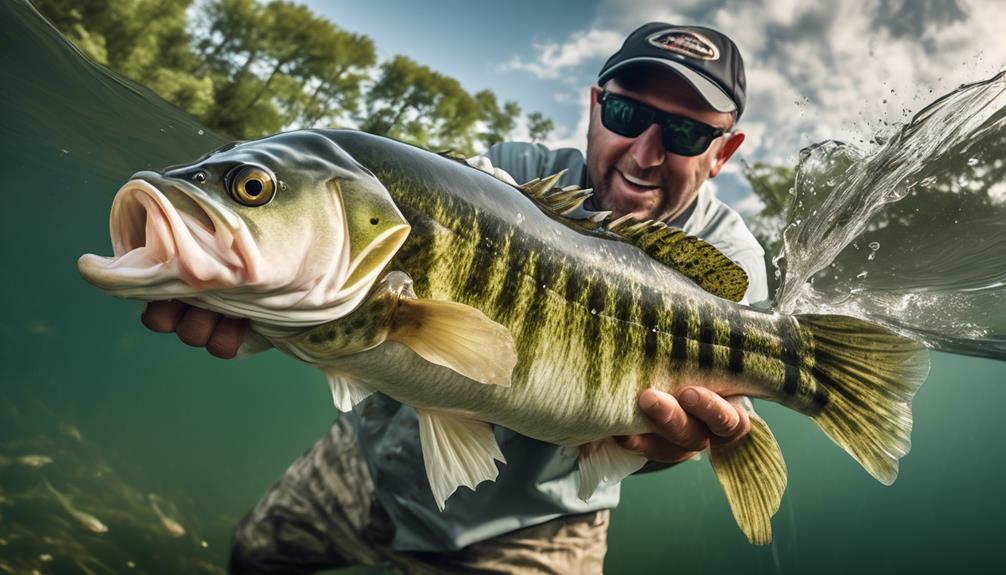
To ensure the sustainability of bass populations in Texas, practice ethical fishing techniques and prioritize conservation efforts when engaging in bass fishing activities. Conservation practices are essential for maintaining healthy bass populations and preserving the natural ecosystem. When fishing, always adhere to catch and release guidelines, especially for larger bass, to allow them to reproduce and sustain the population. Handling fish with care, using barbless hooks, and minimizing air exposure during catch and release are all ethical fishing behaviors that contribute to conservation efforts.
Furthermore, it's crucial to be mindful of the environment while fishing. Avoid damaging aquatic vegetation and habitats where bass spawn and seek refuge. Use biodegradable or non-toxic fishing gear to minimize the environmental impact. Properly dispose of any trash or fishing line to prevent harm to wildlife and the ecosystem.
Participating in habitat restoration and clean-up efforts in bass fishing areas is another way to contribute to conservation practices. Many organizations and groups coordinate events aimed at restoring and protecting bass habitats. Getting involved in these initiatives not only helps conserve the environment but also fosters a sense of stewardship and responsibility among anglers.
Reporting Violations and Enforcement Measures
If you witness any violations of bass fishing regulations in Texas, promptly report them to the appropriate authorities for enforcement action. Reporting violations is crucial for maintaining the integrity of bass fishing regulations and ensuring the sustainability of the bass population in Texas waters.
When reporting violations, it's important to provide as much detail as possible, including the location, date, time, and a description of the violation. Your prompt reporting can help enforcement agencies take necessary actions to address the violation and prevent further harm to the bass population and their habitat.
- Contact the Texas Parks and Wildlife Department: The TPWD is responsible for enforcing fishing regulations in Texas. You can report violations by contacting the local TPWD office or using the department's online reporting system.
- Provide Witness Statements: If you witness a violation, be prepared to provide a detailed witness statement to the enforcement authorities. Your statement can significantly support the investigation and enforcement process.
- Follow Up on Your Report: After reporting a violation, it can be helpful to follow up with the enforcement authorities to provide any additional information or assist with the investigation if needed. Your cooperation can contribute to the successful enforcement of bass fishing regulations in Texas.
Frequently Asked Questions
Can I Use Live Bait for Bass Fishing in Texas?
Yes, you can use live bait for bass fishing in Texas. However, it's important to be aware of bait fish regulations and any specific rules for private waters fishing. Always practice catch and release to help maintain a healthy bass population.
Are There Any Specific Regulations for Fishing in Private Lakes or Ponds in Texas?
In Texas, specific regulations apply to fishing in private lakes. You may need permits from the landowner or homeowner's association. Some community ponds have size limits for bass fishing. Always check local regulations before casting your line.
Are There Any Restrictions on Fishing at Night for Bass in Texas?
Yes, there are restrictions on night fishing for bass in Texas. Bass have nocturnal habits and are more active at night, especially during full moon phases. Using underwater lights can enhance fishing at night, but be aware of fishing regulations.
Can I Use a Cast Net to Catch Bait Fish for Bass Fishing in Texas?
Yes, you can use a cast net to catch bait fish for bass fishing in Texas. When selecting bait, consider the size and type of fish you're trying to catch. Practice different casting techniques to improve your success.
Are There Any Regulations for Catch and Release Fishing for Bass in Texas?
Yes, there are regulations for catch and release fishing for bass in Texas. It's important to follow fishing ethics and practice catch and release to support conservation efforts and maintain the bass population.
Conclusion
Now that you understand the bass fishing regulations in Texas, you can enjoy your fishing trips with confidence.
Remember to always check for updates on regulations and follow the catch limits and size restrictions to help conserve the bass population.
By following the rules and practicing ethical fishing, you can contribute to the preservation of this popular sport for future generations to enjoy.
Happy fishing!
